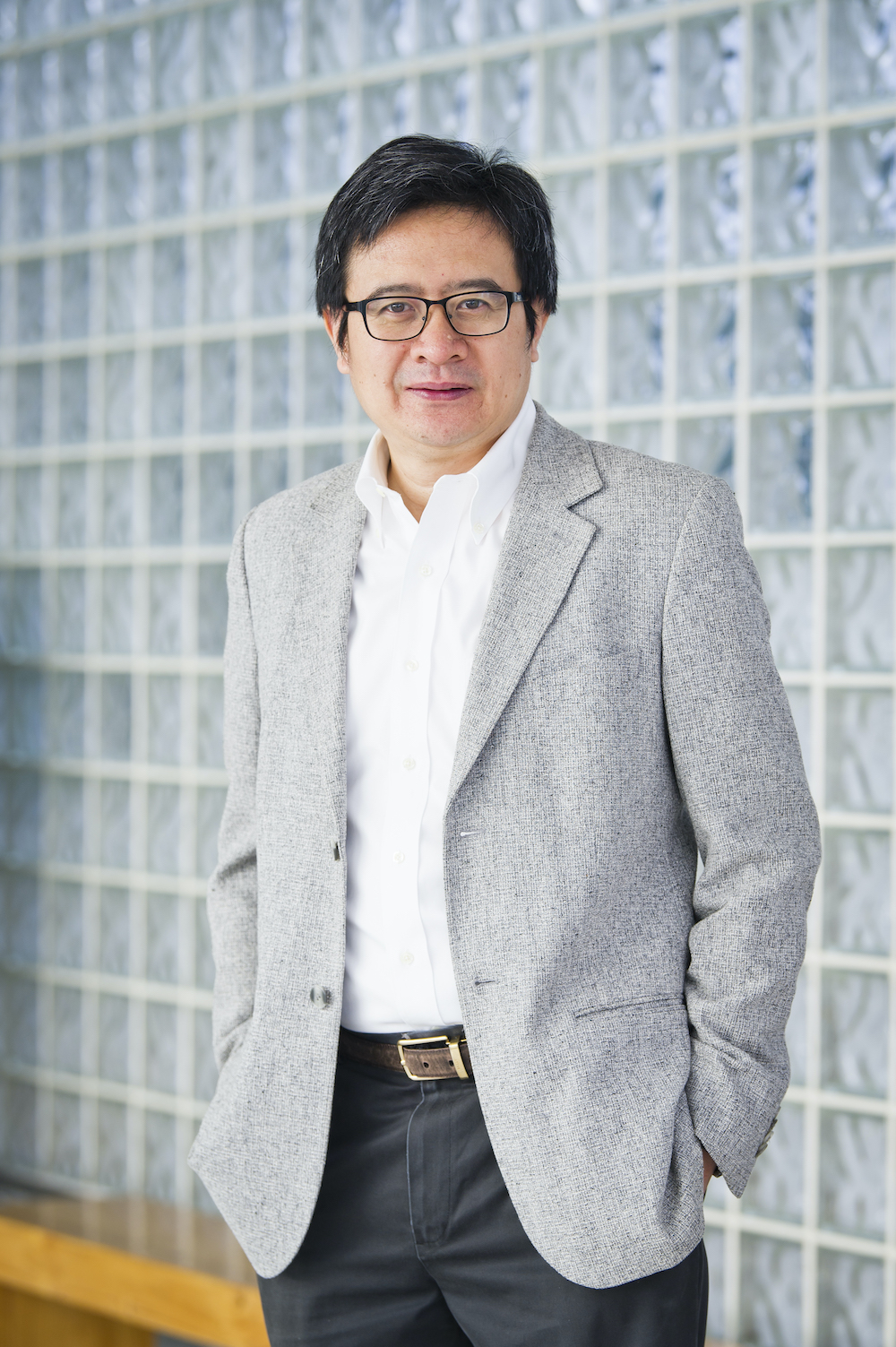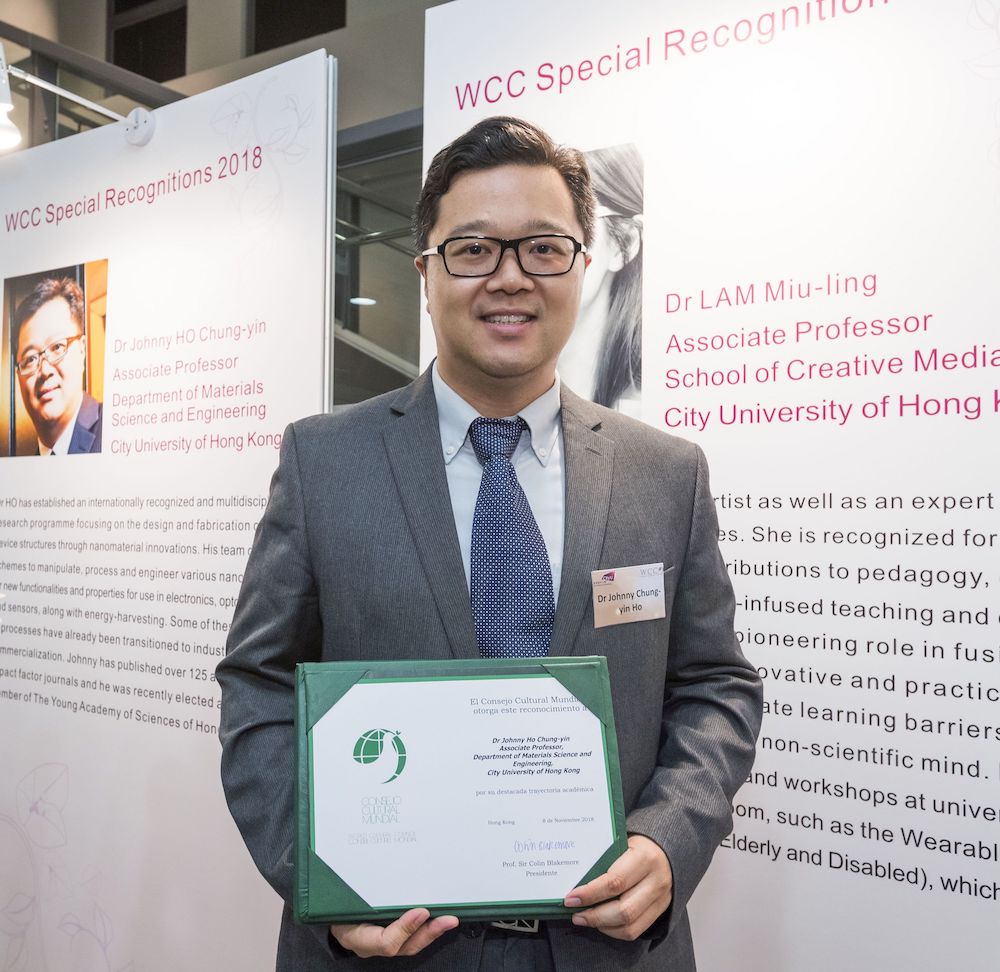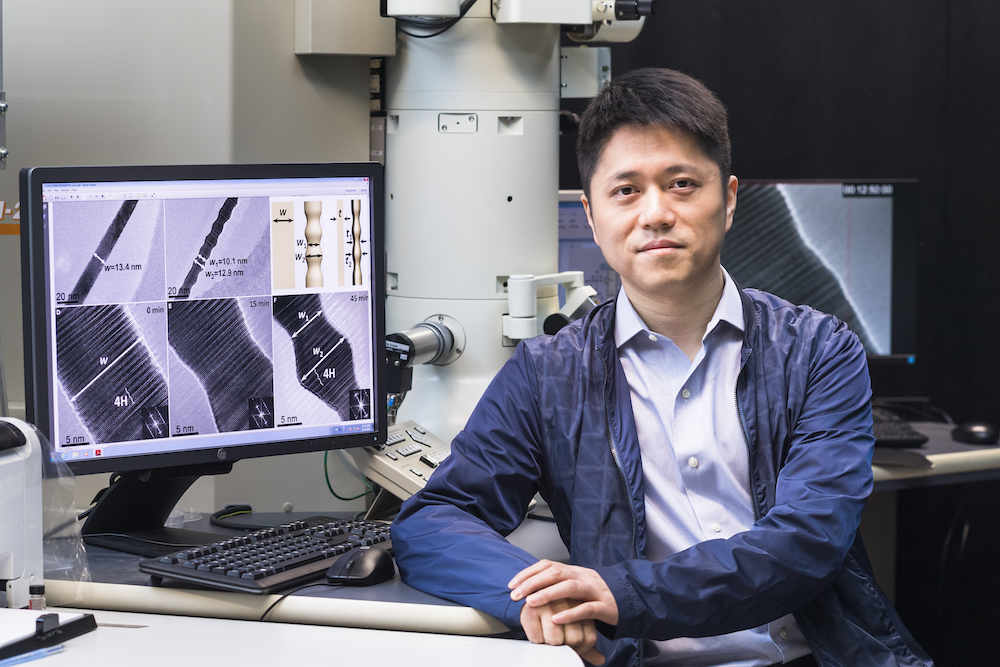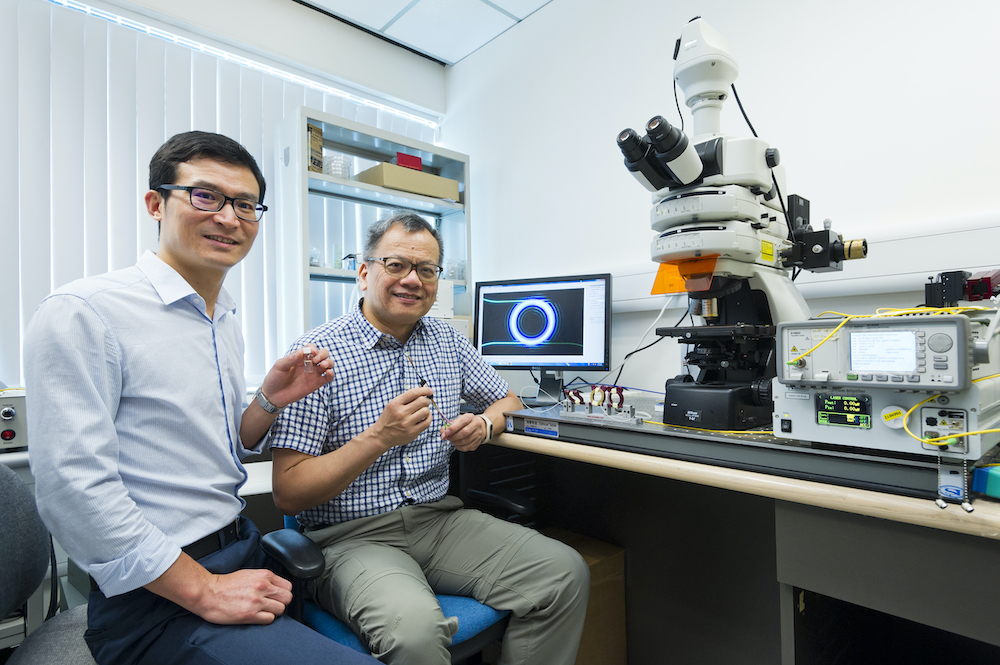Four CityU scholars awarded HK$23m funding from RGC research fellow schemes
Four outstanding scholars from City University of Hong Kong (CityU) have been selected as awardees of the inaugural Senior Research Fellow Scheme (SRFS) and Research Fellow Scheme (RFS) under the Research Grants Council (RGC), being granted a sum of more than HK$23 million as research funding. The acknowledgement of their research achievements is testimony to CityU’s research strengths and recognition of the University’s efforts in fostering interdisciplinary research.
The funding will be used to support the four CityU scholars to advance research into mathematical theories for kinetic equations, flexible electronic technologies, nanomechanics and strain engineering, and novel light-generation technologies.
Professor Yang Tong: partial differential equations and kinetic theories

Professor Yang Tong, Chair Professor of Mathematics, was granted the title “RGC Senior Research Fellow”. He has been working on problems related to partial differential equations and kinetic theories. He will use the SRFS grant to develop analytic techniques that can be applied to studies on solution behaviour and fluid dynamic limits of some typical kinetic models.
The study on the gas motion and fluid dynamics can be traced back to the 17th century when Sir Isaac Newton quantified the fluid phenomena by Newton equations (Newton's law of viscosity). Tremendous progress was made from the 18th to the 20th century when many famous equations were formulated, such as the Bernoulli’s law, Euler equation, Navier-Stokes equation, and Prandtl equation.
Many famous equations of motion have been derived by focusing on different aspects of gases and fluids in different physical scales. In the macroscopic scale where the gas and fluid are regarded as a continuum, their motion is described by the macroscopic quantities such as macroscopic mass density, temperature, and pressure. In this scale, the Euler and Navier-Stokes equations are the most famous equations among the governing systems proposed in fluid dynamics. And these two fundamental systems of equations are typical examples of the conservation laws.
In opposite to the macroscopic scale, gas and fluid are viewed as a many-body system of microscopic particles, such as atoms and molecules, in the microscopic scale. The motion of the system is governed by the coupled Newton equations, within the framework of classical mechanics. Since the movement of each atom takes place in the three-dimensional space, an enormous number of Newton equations would be involved in the calculation. As a result, it is not practical to use the Newton equations because solving such a large coupled system and specifying all the initial data are impossible. Statistics and probability are to be used for calculation instead. On the other hand, the macroscopic fluid dynamical quantities mentioned above are related to the statistical average of the quantities depending on the microscopic state.
The kinetic theory gives the mesoscopic (between the macroscopic and microscopic scales) description of the movement of gas and fluid. It is the fundamental theory that links the theories of microscopic and macroscopic scales. And the Boltzmann equation is the most fundamental equation in the kinetic theory.
In this project, Professor Yang aims at studying the solution behaviour and fluid dynamic limits of some typical kinetic models, including the Vlasov-Maxwell-Boltzmann system and the Vlasov-Nordström-Fokker-Planck system. The analytic techniques developed in this project may be applicable to the study on other systems of kinetic equations, so as to enrich the existing mathematical theories in this important area.
Professor Johnny Chung-yin Ho: nanowire transistor arrays and integrated circuits for next-generation flexible electronic technology

Professor Johnny Chung-yin Ho, Professor in the Department of Materials Science and Engineering, was conferred an “RGC Research Fellow”. The research project he leads will address the growing need for advanced applications of flexible electronic technologies.
In the past decade, flexible electronics have been one of the major driving forces behind the rapid development in fields like healthcare, buildings, the Internet of Things, and artificial intelligence. It results in a growing demand for flexible devices with a higher switching frequency, lower operating power, and enhanced reliability. At the same time, the advancement of nanotechnology has facilitated unique physical properties of semiconducting metal oxide nanowires, which makes them the ideal active device channel materials for electronics.
However, there are still many significant challenges in integrating these nanowires into parallel arrays to fabricate flexible electronics with high-performance and ultra-low power consumption.
Professor Ho’s project aims to develop mechanically flexible negative-capacitance nanowire transistor arrays and integrated circuits by using metal-oxide nanowire materials which have high carrier mobility. They also aim to establish design guidelines, as well as versatile and cost-effective platforms, to develop high-performance and ultralow-power consumption devices on a large scale, and to go beyond conventional flexible electronic technologies.
Dr Lu Yang: nanomechanics and elastic strain engineering of covalent crystals

Dr Lu Yang, Associate Professor in the Department of Mechanical Engineering, was also an awardee of the "RGC Research Fellow". He will investigate the mechanics and deformation behaviour of a few covalent crystal solids at the nanoscale, such as diamond, silicon, and silicon carbide. His project will focus on changing their physical properties by large elastic straining and designing novel functional devices accordingly.
Because of the strong and directional covalent bonding among the atoms, covalent crystals are usually hard at the macroscopic scale and brittle fracture often occurs before obvious deformation. Covalent crystals have many important industrial applications, including cutting, drilling and polishing. They can also be used as semiconductor materials for microelectronics, optics, and microelectromechanical systems (MEMS).
However, at the microscopic scale, scientists have found that covalent crystals can have some very different properties. For example, Dr Lu and his research team have discovered that diamond and silicon in nanoscale show significantly enhanced elasticity.
This discovery turns the concept of “elastic strain engineering (ESE)” of covalent crystals into reality. ESE means to achieve unusual and desired functional properties, for example, changing electron mobility in semiconductors, by applying ultralarge mechanical stress or strain in the crystal lattices.
Dr Lu and his team will conduct nanomechanical investigations on a few types of covalent crystal solids. They aim to explore their deformation behaviour at the nanoscale and how to modulate the change of bandgap or other properties through strain-tuning, in order to enhance the conductivity and optoelectronic properties of nanosized covalent crystals for further application.
The project will provide unprecedented details and quantitative insights into how deep ESE can effectively tune the functional properties of the nanoscale solids for future electronics, optoelectronics, or even quantum devices.
Dr Wang Feng: Synthesis of rare-earth-doped semiconductor materials for high electric field electroluminescence applications

Dr Wang Feng, another “RGC Research Fellow” and Associate Professor in the Department of Materials Science and Engineering, will focus on advancing alternating current electroluminescence (ACEL) research to enable efficient and sustainable light generation.
Traditional tungsten light bulbs and old television sets have gradually phased out, replaced by the technology of light-emitting diodes (LEDs). The LED lights and LED TVs are commonly used nowadays and OLED (Organic LEDs), as well as QLED (Quantum dot LEDs) TVs with even better resolution, have emerged. However, the development of direct current-driven electroluminescence (DCEL) technology which supports the operation of these LED devices has reached its bottleneck. For example, the manufacturing cost is high, and the device stability is seriously affected by water and oxygen. Also, it is difficult to fabricate flexible devices with such technology.
Compared to DCEL, alternating current electroluminescence (ACEL) is an effective alternative. It is cost-effective, stable, and energy saving. However, the lack of available ACEL materials greatly hindered its development as well as practical applications.
In this project, Dr Wang will develop a new class of calcium zinc oxysulfide (CaZnOS) based ACEL materials, replacing the conventional zinc sulfide (ZnS). These two materials are similar in terms of composition, crystal structure, energy bandgap, and expected optical properties. More importantly, CaZnOS permits rare earth doping, thereby enabling luminescence with optical tuning across the full spectrum of light, from ultraviolet to near-infrared. In addition to opening up new opportunities for designing advanced optoelectronic devices, this project will also provide a series of new basis and insights for research in chemistry, materials science, and physics.
The purpose of the SRFS and RFS is to support exceptionally outstanding academics to facilitate their research efforts and promote research excellence, with ten awardees respectively. The awardees were selected based on the contribution and potential impact of the proposed research project, their proven research track record, and their leadership and vision, as well as the support of their university. Each SRFS and RFS awardee will receive a fellowship grant of about HK$7.8 million and HK$5.2 million respectively over a period of 60 months.
Related Stories:
Dr Lu - Elastic properties of nano diamond revealed for the first time
Dr Wang - Breakthrough in multiphoton upconversion with increased energy conversion efficiency